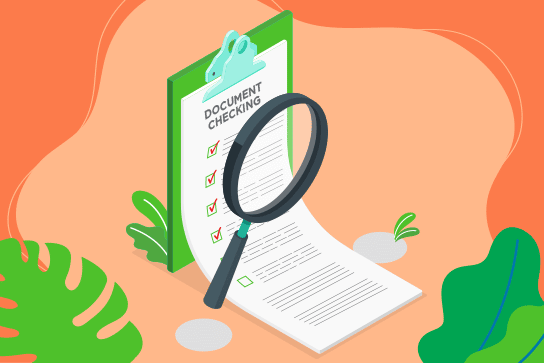LISTEN AUDIO
Last Updated on April 8, 2023 by Ozlinks Education
Subject: Prepare food to meet special dietary requirements
This unit code SITHCCC018* describes the performance outcomes, skills and knowledge required to prepare dishes for people who have special dietary needs for health, lifestyle, or cultural reasons. It requires the ability to confirm the dietary requirements of customers, use special recipes, select special ingredients, and produce food to satisfy special requirements.
This unit does not include menu planning for special diets which is covered in the unit SITHKOP004 Develop menus for special dietary requirements.
The unit applies to cooks and patissiers working in hospitality and catering organisations. This could include restaurants, educational institutions, health establishments, defence forces, cafeterias, kiosks, cafes, residential caterers, in flight and other transport caterers, and event and function caterers.
Elements and Performance Criteria.
Elements describe the essential outcomes. Performance criteria describe the performance needed to demonstrate achievement of the element.
1. Confirm special dietary requirements and select ingredients.
1.1 Confirm dietary and cultural food requirements of the customer.
1.2 Liaise with others to clarify requirements.
1.3 Recognise potential health consequences of overlooking special dietary requirements of customers.
1.4 Access special dietary recipes and select specialised ingredients.
1.5 Identify from recipes and packaging, ingredients that may cause health consequences due to food allergies or intolerance.
1.6 Exclude ingredients from dishes as requested by the customer.
2. Prepare foods to satisfy nutritional and special dietary requirements.
2.1 Follow recipes to produce dishes for those with special dietary requirements.
2.2 Modify menu items to meet different dietary requests by excluding or substituting ingredients while maintaining equivalent nutritional value.
2.3 Communicate specific dietary requirements for food preparation to other team members.
2.4 Select appropriate ingredients to ensure optimum nutritional quality of dishes.
2.5 Use appropriate equipment and cooking techniques for specific diets.
2.6 Employ suitable preparation and cooking techniques to retain optimum nutritional values.
3. Present prepared food.
3.1 Present nutritionally balanced food in an appetising and attractive manner.
3.2 Visually evaluate dish and adjust presentation as required.
3.3 Store dishes in appropriate environmental conditions.
3.4 Minimise waste to maximise profitability of food items prepared.
3.5 Clean work area and dispose of or store surplus and re-usable by-products according to organisational procedures, environmental considerations, and cost-reduction initiatives.
Assessment Requirements.
Performance Evidence.
Evidence of the ability to complete tasks outlined in elements and performance criteria of this unit in the context of the job role, and:
- follow recipes to prepare six different dishes that cater to customers with different dietary requests, including at least one of each of the following:
- food restrictions
- food preferences
- cultural or religious requirements
- modify recipes and menu items to meet dietary requests specified above, excluding or substituting ingredients while maintaining equivalent nutritional value.
- produce above dishes for at least six different customers:
- within commercial time constraints and deadlines
- reflecting required quantities to be produced
- following procedures for portion control and food safety practices when handling and storing food.
Knowledge Evidence.
Demonstrated knowledge required to complete the tasks outlined in elements and performance criteria of this unit:
- culinary terms and trade names for:
- substitute ingredients used to produce dishes with special dietary recipes
- ingredients suitable for meeting basic nutritional needs
- ingredients that cause common allergic reactions
- food additives and preservatives
- understanding of:
- drug-food interaction
- food allergy
- food intolerance
- cultural and religious dietary sanctions
- main types, culinary characteristics and ingredients of special diets and cultural or religious diets that are part of contemporary Australian society:
- contemporary eating regimes: elimination, macrobiotic
- exclusions for allergies, contraindications with medicines or food intolerance
- fat-free
- fluids
- food preferences
- food restrictions
- gluten-free
- halal
- high carbohydrate
- high or low energy
- high or low protein
- high fibre
- Hindu
- kosher
- lacto ovo
- low carbohydrate
- low cholesterol
- low fat
- low gluten
- low kilojoule
- low sugar
- modified sodium or potassium
- modified texture
- nutritional requirements
- portion size
- substitutes: gluten-free flour, yeast-free flour, non-sugar sweeteners
- sugar-free
- type one and two diabetes
- vegan
- vegetarian
- key health and legal consequences of failing to address special requirements:
- allergic reactions
- anaphylaxis
- food sensitivity or intolerance reactions
- mise en place requirements for special diet foods
- basic principles and practices of nutrition:
- nutrients and their food sources
- influence on food choice
- food and beverage selection influences
- food labelling and interpretation
- role and implications of using food additives and preservatives
- health implications of food choices
- role of good nutrition in avoiding dietary diseases
- effects of various cooking methods and food storage on nutrients
- primary components of Dietary Guidelines for Australians, in particular those for older Australians, children and adolescents.



